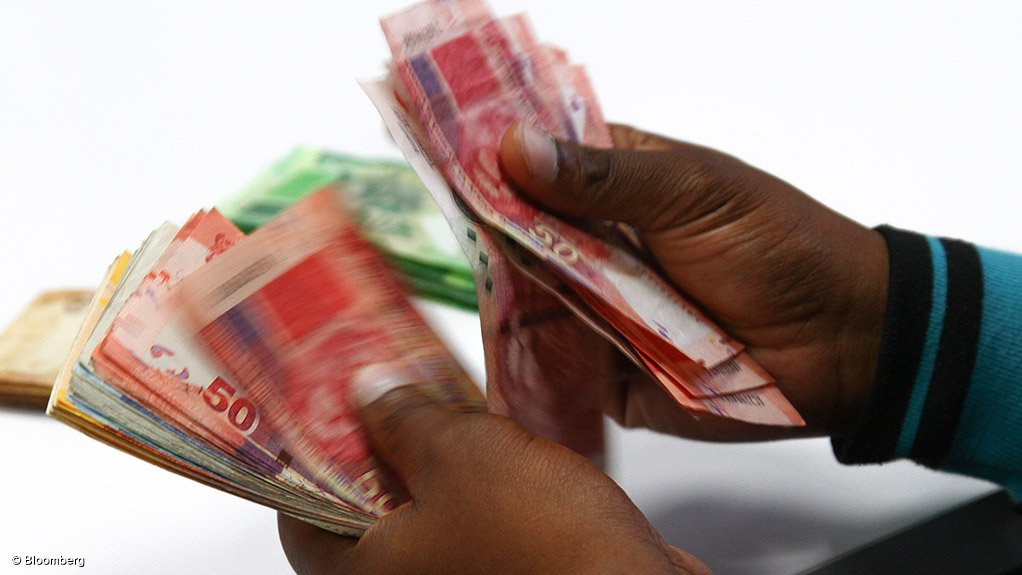The amount owed to South Africa’s municipalities had surpassed the R100-billion mark, but the collectable amount was just R20.8-billion, the National Treasury’s local government revenue and expenditure report for the third quarter of the 2014/15 financial year revealed.
Released on Monday, the report, covering the nine-month period from July 2014 to March 2015, showed that consumer debt for water, electricity, property rates and waste and wastewater management, besides others, had increased from R96.6-billion in the second quarter to R104.9-billion in the three months to March 31.
As at March 31, households accounted for 63.7% or R66.8-billion of the debt – which included debt older than 90 days and historic debt, interest on arrears and other recoveries – an uptick from the 62.7% or R60.5-billion reported in the second quarter.
Government accounted for 5% or R5.2-billion of the total outstanding debtors, while business accounted for 21.7% or R22-billion.
The bulk of the debt emerged from Gauteng, which accounted for 42.1% or R44-billion, followed by KwaZulu-Natal, with R12.6-billion, and the Free State, with R10-billion.
“If rates and consumer debt is limited to below 90 days and all interest is excluded from the calculation, then the actual realistically collectable amount is estimated at R20.8-billion,” the Treasury pointed out in the report, noting that over R84-billion of the debt had surpassed 90 days.
According to the report, metropolitan municipalities were owed R57.5-billion in outstanding debt as at March 31 – a R2.1-billion rise on the second quarter of the current financial year and a R4.3-billion, or 8%, increase when compared with the third quarter of the prior year.
Again, households accounted for the bulk of the debt, owing the metropolitans R37-billion, followed by businesses, which owed R17.1-billion and government agencies, which accounted for R1.7-billion.
“The City of Johannesburg is still owed the largest amount at R19-billion, followed by Ekurhuleni Metropolitan municipality at R11.7-billion, Cape Town at R6.9-billion and the City of Tshwane at R6.5-billion,” the report showed.
Meanwhile, the municipalities owed contractors and service providers around R25.4-billion as at March 31 – an overall increase of R7.1-billion on the R18.3-billion reported in the third quarter of the prior year.
“A majority of the amount owed to contractors and service providers is mainly under the 30 days classification and may indicate delayed spending by municipalities,” the Treasury explained.
It added that the Free State had the highest percentage – at 78.8% – of outstanding creditors greater than 90 days, followed by the North West with 72.8% and Mpumalanga with 69.3%.
“The year-on-year increase in outstanding creditors could be an indication that municipalities are experiencing liquidity and cash challenges.”
Meanwhile, during the nine-month period under review, municipalities underspent their budgets, but overshot their revenue collection targets, the report showed.
During the first three quarters of the year, municipalities spent only 62% – R214-billion – of the aggregate R345.3-billion total adjusted budget for the year.
Capital expenditure for the nine months to March 31, reached R30-billion, equating to 46% of the adjusted capital budget for 2014/15 of R65.4-billion, while R184-billion, or 66%, of the R280-billion adjusted operating expenditure budget was spent by March 31.
Aggregate billing and other revenue during the period under review amounted to 70%, or R239.5-billion, of the total adjusted revenue budget of R341.9-billion for the 2014/15 financial year.
“There is an overperformance of 1.2% or R2.6-billion on year-to-date revenue collection [and] an underperformance of 6.7% or R13.2-billion on operational expenditure and 38.7% or R19-billion on capital expenditure,” the Treasury noted.
EMAIL THIS ARTICLE SAVE THIS ARTICLE
To subscribe email subscriptions@creamermedia.co.za or click here
To advertise email advertising@creamermedia.co.za or click here











